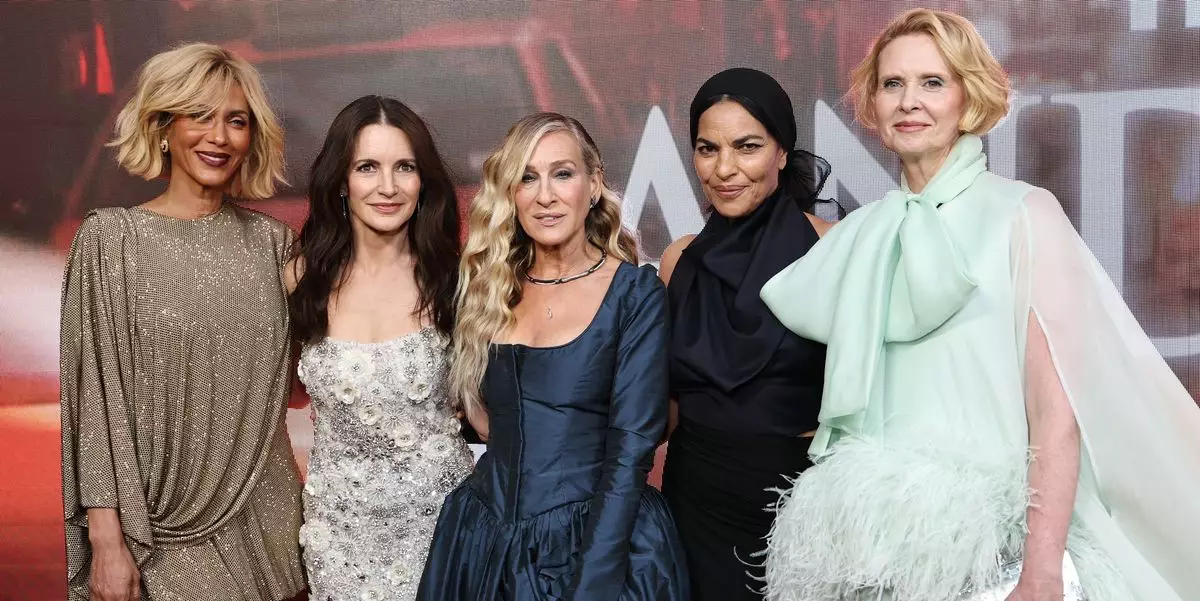The announcement that HBO Max’s beloved yet polarizing series, “And Just Like That…”, will conclude after its third season marks more than just the end of a TV show—it signifies the closing of a chapter that reshaped our understanding of female friendships, aging, and modern life. Unlike many series finales that come with a premeditated sense of closure, this decision was borne out of creative introspection by Michael Patrick King and the cast, raising critical questions about storytelling, audience expectations, and legacy. While fans might feel a bittersweet twinge at the news, it’s essential to reflect on what this series and its conclusion symbolize within the broader landscape of television and cultural dialogue.
King’s declaration that the series ends on his own terms suggests a commendable respect for creative integrity. In an era where prolonging series beyond their natural lifespan is often driven by commercial interests, choosing to end a show because the story has reached a natural stopping point is an act of artistic courage. This highlights a significant shift from the typical, often-consuming narrative machine that prioritizes ratings over narrative satisfaction. It becomes clear that the creative team prioritized quality over quantity, valuing meaningful storytelling rather than tying the series to an infinite timeline. This approach is admirable and sets a precedent for future television narratives, emphasizing the importance of strategic storytelling that respects both creator and audience.
Legacy and Nostalgia: The Emotional Toll
The emotional responses from stars like Sarah Jessica Parker, Kristin Davis, and Cynthia Nixon reveal much about the series’ impact on their lives. Parker’s heartfelt tribute underscores a profound connection with Carrie Bradshaw—more than a character, she’s become an icon who embodies the complexities of womanhood in the modern age. Her words evoke nostalgia but also a mature acceptance that some stories are meant to end, leaving fans pondering whether the series served as a true reflection of life’s unpredictability or merely a sanitized, idealized version of female camaraderie.
Furthermore, the fans’ reactions—whether feelings of nostalgia, disappointment, or gratitude—mirror the series’ role in shaping cultural conversation. “And Just Like That…” delved into topics like aging, marriage, career, and sexuality, unafraid to stir controversy and challenge expectations. Its ending signifies the completion of an era that dared to evolve its characters beyond traditional sitcom tropes, instead offering a layered, ongoing dialogue about what it means to grow older in a complex, rapidly changing society.
However, it’s essential to question whether the series truly lived up to its potential or if it fell into the trap of revisiting familiar themes with superficial novelty. The decision to end the show hints that perhaps some stories have exhausted their narrative breath, and pushing further might have risked diluting their original impact. That being said, this closing chapter leaves room for reflection on how television handles stories about female friendship, aging, and identity—subjects that rarely receive nuanced treatment in mainstream media.
The Politics of Farewell: Artistic Responsibility in Modern TV
The series’ conclusion reveals an underlying commentary about the responsibilities of storytellers in a time of cultural flux. “And Just Like That…” had the tough task of balancing nostalgia with progress; it inherited the passionate fanbase of “Sex and the City” while trying to modernize its themes. Its ending signifies a conscious choice to respect the story’s integrity, resisting the urge to extend a narrative that no longer serves its characters or viewers authentically.
This decision also sets a subtle example for how creators can tactfully disengage from a series, prioritizing emotional authenticity over commercial longevity. As audiences grow more sophisticated and vocal, creators are increasingly called to be honest about the limits of their stories. King’s assurance that the series concludes while still maintaining the joy and adventure of previous seasons demonstrates a respectful acknowledgment of the audience’s investment without risking franchise fatigue or trivialization.
In a broader context, this move reflects a shift in television culture—where the narrative’s quality and relevance are valued more than mere episodic longevity. It reminds us that storytelling, like life itself, must have its natural rhythm, and forcing an ending can sometimes rob a narrative of its genuine resonance.
Ultimately, the end of “And Just Like That…” invites us to reconsider what it means to say goodbye—to embrace closure as an act of artistic honesty rather than a capitulation to fleeting trends. It’s a testament to the power of storytelling that respects its own boundaries, leaving legacy and memories intact for those who cherished this journey.


Leave a Reply